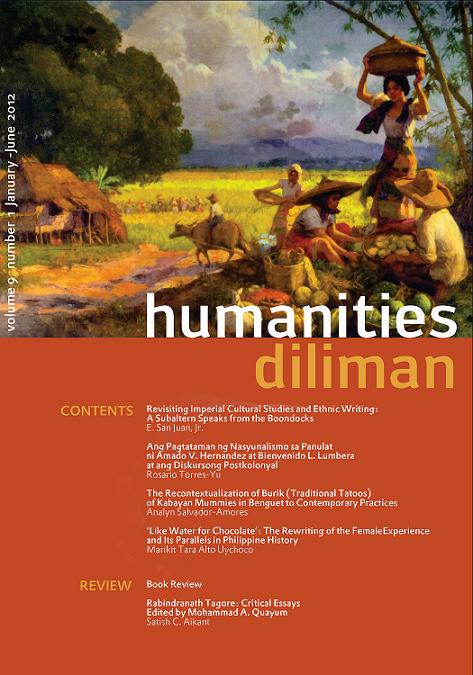The Recontextualization of Burik (Traditional Tattoos) of Kabayan Mummies in Benguet to Contemporary Practices
Abstract
What practices and techniques contribute to the “recontextualization” of an extinct traditional tattoo tradition in contemporary practice? Through what channels do today’s practitioners revive the application and use of extinct tattoos? This paper is about the “recontextualization” of burik, an extinct traditional tattoo found in some of the mummies in Kabayan, Benguet, north of Luzon, Philippines. While the traditional cultural bearers are already nonextant, I explore the contemporary transformations of the burik through “cultural borrowing” and “appropriation,” such as (a) graphic designs on clothing, (b) actual tattoo designs on the skin, and (c) an aesthetic tattoo practice. Tattooing, in terms of both practice and design, has become a popular practice worldwide. In the Philippines, tattoo artists turn to traditional tattoo practice by “re-invoking” the features of tattoos (pain, permanence), and the “graphicness” (designs) is appropriated to recent practices in tattooing the skin (“skin-deep”) and incorporated in tattoo designs on clothing (“surface”).
I argue that the successive phases and changes in the status of burik tattoos—enabled by the advent of modern technology, the Internet, and mass media—encourage an interaction between contemporary and historical influences rather than an extinction of past practice. Such cross-sector sources continue to characterize the reinterpretation of traditional tattoos in contemporary practices. To understand fully the significance of burik today, I draw on Appadurai’s notion of objects as “things-in-motion” and Kopytoff’s “social biography of objects” as the burik relate to relevant socioeconomic and political contexts across time.
Keywords: tattoos, reinvention, Benguet, tradition, mummies


